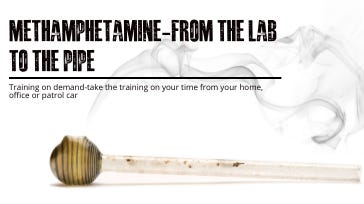Precursors 2022: A Comprehensive Report on Chemicals Used in Illicit Drug Manufacturing
The United Nations International Narcotics Control Board (INCB) has recently released its report, Precursors 2022, detailing the use of chemicals in the illicit manufacturing of illicit drugs and psychotropic substances. The report provides a comprehensive overview of the global situation in 2021 and the first 10 months of 2022, covering various substances such as amphetamines, fentanyl, GHB, ketamine, and more. In this article, I will summarize the key findings of the report and discuss the implications of these trends.
Overview of the Report
The report begins with a general overview of the global situation regarding the illicit manufacturing of drugs. It notes that while the COVID-19 pandemic has had a significant impact on drug trafficking and production, the overall demand for illicit drugs remains high. Criminal organizations have adapted to the changing circumstances and are increasingly turning to the use of precursors and other chemicals to manufacture drugs such as amphetamines, fentanyl, and GHB.
Amphetamines
The report highlights the continued use of ephedrine and pseudoephedrine in the illicit production of amphetamines. While the total amount of these substances seized globally has decreased in recent years, the report notes an increase in seizures in certain regions such as East and South-East Asia. Additionally, the report highlights the emergence of new synthetic routes for amphetamine production, such as the use of phenyl-2-propanone (P2P) and its derivatives. I cover this in depth in my course “Methamphetamine, From the Lab to the Pipe.” You can view it online by clicking here.

Fentanyl
Fentanyl and its analogues have emerged as a significant concern in recent years, with the report noting a sharp increase in seizures of these substances since 2014. The report identifies several alternatives to NPP and ANPP, including stable chemical intermediates and pre-precursors. While much of the innovation with regard to these alternatives has been observed in North America, incidents related to illicit fentanyl manufacture have been reported in other regions such as India and the Netherlands.
GHB
The report notes that GBL, a chemical precursor of GHB, continues to be a significant concern. While seizures of GBL decreased in 2021 compared to the previous year, the report highlights that the largest quantities seized were reported by Australia. The report also notes the negligible amount of seizures of 1,4-butanediol, a precursor of GBL and a pre-precursor of GHB.
Ketamine
The report identifies two substances, "hydroxylimine" and 2-chlorophenyl cyclopentyl ketone, as the primary precursors used in the illicit production of ketamine. While seizures of these substances have decreased in recent years, the report notes that China reported seizures totaling more than 4.7 tons of 2-chlorophenyl cyclopentyl ketone in 2021. The report also notes the dismantling of illicit ketamine laboratories in various countries, including Cambodia, Canada, and the Netherlands.
New Psychoactive Substances
The report notes the unsystematic reporting of seizures of precursors of new psychoactive substances, but highlights that most of the seizures made in 2021 involved precursors of synthetic cathinones. Austria, France, and Poland reported seizures of mephedrone precursors in 2021, while seizures of precursors of mephedrone and alpha-PVP were reported in the Russian Federation in the first 10 months of 2022.
Implications
The information provided in the Precursors 2022 report highlights the ongoing challenges faced by the international community in combating the illicit manufacture of narcotic drugs and psychotropic substances. The report shows that while there have been some successes in controlling the production and trafficking of certain chemicals, traffickers have also responded by seeking out alternative precursors and methods of manufacture.
The fact that many of the chemicals used in the illicit drug trade have legitimate industrial or medical uses also presents a challenge for regulatory bodies. Striking a balance between ensuring access to these chemicals for legitimate purposes while preventing their diversion for illicit purposes is a delicate task.
Furthermore, the report highlights the need for international cooperation in addressing the issue of precursor chemicals. The global nature of the illicit drug trade means that a coordinated approach is necessary to effectively combat the problem.
Wrapping it All Up
The Precursors 2022 report provides valuable insights into the global trade in precursor chemicals for the illicit manufacture of narcotic drugs and psychotropic substances. While progress has been made in controlling certain chemicals, the constantly evolving nature of the trade means that regulatory bodies must remain vigilant and adaptable.
The report emphasizes the need for continued international cooperation and coordination in addressing the issue of precursor chemicals. By working together, countries can better identify and track the movement of these chemicals and prevent their diversion for illicit purposes.
Overall, the Precursors 2022 report serves as a reminder of the ongoing challenges faced by the international community in combating the illicit drug trade. However, it also offers hope that with continued efforts and cooperation, progress can be made in reducing the harm caused by these dangerous substances.
FAQs
What are precursor chemicals?
Precursor chemicals are chemicals that are used in the production of illicit drugs, such as heroin and methamphetamine.
Why is it important to control precursor chemicals?
Controlling precursor chemicals is important because it can help to disrupt the production and trafficking of illicit drugs, ultimately reducing their availability and harm.
What challenges do regulatory bodies face in controlling precursor chemicals?
Regulatory bodies face the challenge of balancing the need to ensure access to these chemicals for legitimate purposes while preventing their diversion for illicit purposes.
Why is international cooperation necessary in addressing the issue of precursor chemicals?
International cooperation is necessary because the global nature of the illicit drug trade means that a coordinated approach is necessary to effectively combat the problem.



